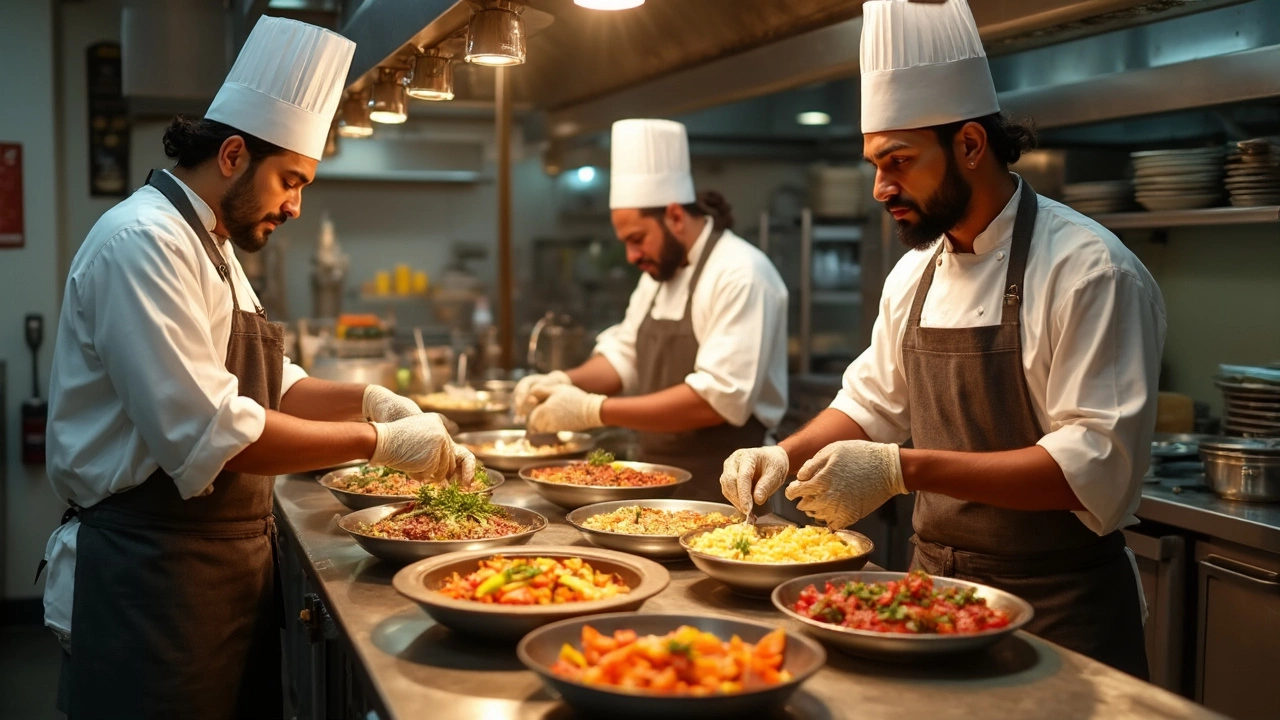Restaurants Kitchen Tips That Actually Work
If you run a restaurant, the kitchen is the heart of your business. A well‑planned kitchen saves time, cuts waste, and makes every dish taste better. Below you’ll find straight‑forward advice you can start using today, whether you’re opening a new spot or revamping an old one.
Designing an Efficient Kitchen Layout
First thing to sort out is the flow of work. Imagine the steps a dish takes from raw ingredient to plate. Place prep stations, cooking lines, and plating areas in that order. This reduces back‑and‑forth trips and keeps the line moving.
Use the classic “work triangle” idea: the fridge, stove, and sink should form a triangle so each point is within a few steps of the others. If the triangle is too big, cooks waste time; if it’s too tight, they feel cramped.
Don’t forget the service side. A clear pass‑through window lets servers grab plates without stepping onto the cooking floor. A small buffer zone for finished dishes helps keep the line organized during rush hour.
Ventilation matters too. Good hoods and exhaust fans keep the air clean and prevent heat buildup. Clean air makes chefs more comfortable and reduces the chance of equipment failure.
Choosing the Right Equipment and Tools
Equipment is the biggest upfront cost, so pick wisely. Go for sturdy, energy‑efficient appliances that match the volume you expect. A 6‑burner range may look impressive, but a 4‑burner model could be a better fit for a modest‑size kitchen and cut electricity use.
Standardize tools whenever you can. Using the same size pans, knives, and utensils across stations makes training easier and speeds up prep. It also means fewer spare parts to keep on hand.Invest in a reliable refrigeration system. Temperature swings cost money in spoiled food and can lead to health violations. A unit with a digital read‑out and alarm system warns you before a problem becomes a crisis.
Consider modular equipment. Units that can be re‑configured let you adapt the kitchen as menus evolve. For example, a movable prep table with built‑in sinks lets you add a new station without a major remodel.
Don’t overlook small‑scale tools. A high‑quality mandoline, a good set of tongs, and a calibrated kitchen scale can improve consistency and speed more than any fancy gadget.
Finally, think about maintenance. Choose brands with local service support and easy‑to‑order parts. A proactive maintenance schedule (cleaning fans, checking seals, calibrating ovens) pays off by preventing costly downtime.
Putting these ideas together builds a kitchen that runs like a well‑tuned machine. Start with a clear layout, pick equipment that fits your needs, and keep everything clean and maintained. Your staff will work happier, your food will taste better, and your customers will keep coming back. Ready to give your restaurant kitchen a boost? Try one change today and watch the difference it makes.

Do Restaurants Use Food Processors?
Restaurants often rely on food processors to speed up food preparation and ensure consistency in dishes. From chopping vegetables to making sauces, these machines are essential in most commercial kitchens. This article explores how food processors are used in restaurants, highlighting their benefits and offering tips for selecting the right model for a kitchen. Discover the surprising impact they have on culinary efficiency.
